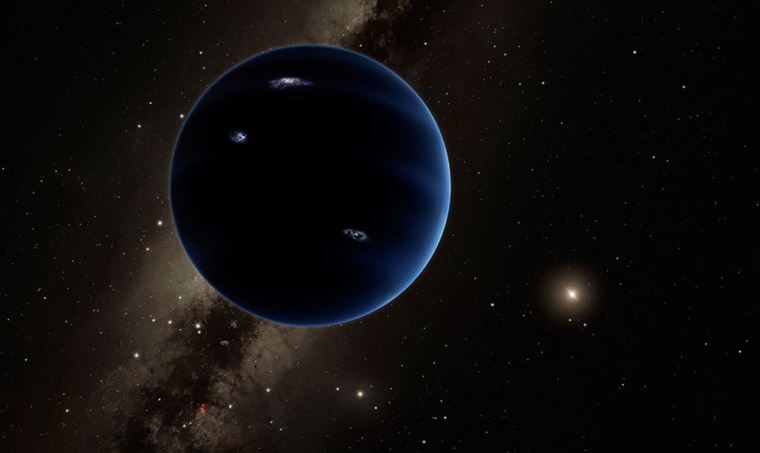Astronomers have long suspected that an enigmatic cosmic object known as Planet 9 may be orbiting the sun in the far reaches of the solar system. Now, new research suggests that this hypothetical world may not be a planet after all, but a bowling ball-size black hole left over from the earliest days of the universe.
In a new paper published on the preprint website arXiv, two scientists introduce a new theory that the so-called primordial black hole beyond Neptune may explain unusual gravitational effects in the outer solar system that first led to the Planet 9 hypothesis.
Unlike black holes that form out of the remains of collapsed stars, primordial black holes are tiny — “somewhere between a baseball and a bowling ball,” said Jakub Scholtz, a postdoctoral fellow at the Institute for Particle Physics Phenomenology at Durham University in the United Kingdom, and one of the authors of the new study.
Though they have not been directly observed, primordial black holes are thought to have developed shortly after the Big Bang, when density fluctuations across the early universe created small, superdense pockets of matter.
“Sometimes they’re said to be relics of the Big Bang,” said study co-author James Unwin, a theoretical particle physicist at the University of Illinois at Chicago.
Unwin and Scholtz say that such a phenomenon could explain the odd orbits of “trans-Neptunian objects” — clusters of asteroids and comets in a region of the solar system known as the Kuiper Belt that lies beyond Neptune. These objects circle the sun on a highly elliptical path that scientists thought could only plausibly be explained by the gravitational effects of a planet in the outer solar system that is up to 15 times more massive than Earth.
But so far, the hunt for Planet 9 has come up empty. Scholtz said the new primordial black hole theory could open up new ways to hunt for the mysterious object that lurks in the outer solar system.
“At this stage, it would be difficult for anyone to say it’s more likely to be one thing or another,” Scholtz said. “We’ve never seen a planet as far out as Planet 9 is supposed to be orbiting, and we’ve never seen a primordial black hole. So, guessing the relative merits of two scenarios is a very difficult exercise. We need to cast our net as wide as possible.”
The researchers suggest that the primordial black hole ended up in our solar system after getting caught in the sun’s gravitational field. If the black hole does exist beyond Neptune, the researchers say it is likely surrounded by a dense halo of dark matter, a form of invisible matter that is thought to make up 27 percent of the universe. The scientists said it may be possible to detect the radiation emitted when these dark matter particles interact with other particles in the vicinity.
“These signals should eventually reach Earth and we could see them with something like the Fermi telescope.” Unwin said.
Konstantin Batygin, a planetary astrophysicist at the California Institute of Technology, who together with his colleague Mike Brown published a study in 2016 that first proposed the existence of Planet 9, said the primordial black hole theory “is a stretch but not entirely implausible.”
In an email to NBC News MACH, Batygin said the new study provides “an interesting alternative” if Planet 9 is not detected.
Bhuvnesh Jain, co-director of the Penn Center for Particle Cosmology at the University of Pennsylvania, agreed and called the new theory “very intriguing.”
“It’s fun to have more possible targets for Planet 9,” Jain said. “It’s an exciting possibility that a free-floating population of primordial black holes exists and the solar system captured at least one in the fairly distant past. From a theoretical standpoint, it’s exciting even if its plausibility right now is early to judge.”
Unwin and Scholtz acknowledge that additional research is needed but said the existence of primordial black holes, if confirmed, could revolutionize scientists’ understanding of how the solar system, and the universe, evolved.
“The discovery of a giant planet in the outer solar system would be an extraordinary discovery,” Unwin said. “But the discovery of a primordial black hole would be immense and even more spectacular.”
Want more stories about space?
- China's lunar rover has found something weird on the moon's far side
- Weird 'whiplash' planet is unlike anything astronomers have ever seen
- A trip to Mars could cause brain damage. Here's how NASA aims to protect astronauts.
Sign up for the MACH newsletter and follow NBC News MACH on Twitter and Facebook and Instagram.


